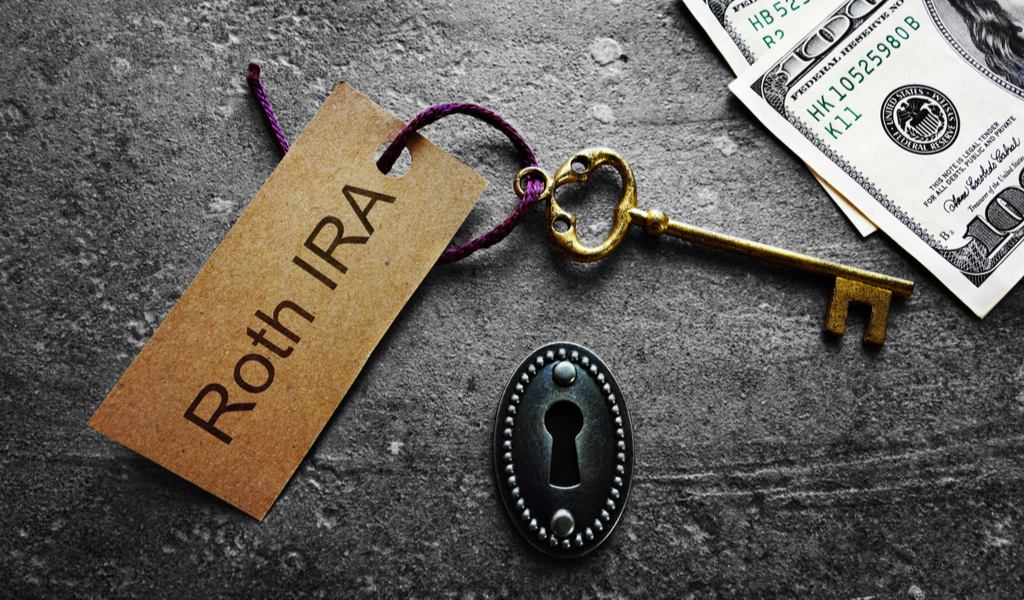Saving for retirement is one of the major milestones of good financial management. Isn’t it one of the reasons you work so hard today; so that you can live old age out in peace without having to work or worry about money?
That’s why it’s important to have a good retirement savings plan. Most employed Americans will have some sort of employer-sponsored retirement plan such as a 401(k), but even those who do not have that option can opt for a Roth IRA.
A Roth IRA is a great retirement plan that comes with numerous advantages and is available to everyone equally. Financial experts take a particular liking to it because of the increased flexibility it allows the account owner as well as the potential to grow your investments tax-free for decades.

Here are 6 of the top benefits of Roth IRA and why you should consider getting one yourself:
It’s Tax-Free
By far the biggest advantage of a Roth IRA is that there is no tax levied on growth and withdrawals. It is a great way to build up a nice little nest egg without having to worry about the government taking a chunk out of it later on – not even for the earnings on your investments.
“Roth IRAs are one of the best vehicles to save for retirement, given the tremendous benefit of tax-free growth,” says Elizabeth Evans, CFP and managing partner of Evans May Wealth in the Indianapolis area.
However, unlike a traditional IRA for which you can contribute money from pre-tax income, Roth IRA only allows contributions from after-tax money. Essentially, you are being taxed upfront so that you don’t have to pay later on. In our book, that’s a big advantage as the money in your Roth IRA account will grow over time, and you can withdraw it all without losing a cent when you hit retirement age (defined as 59 ½ years or older).
It Can be Inherited Tax-Free
Inheritance often comes with a hefty tax charge; even heirs of a traditional 401(k) will need to pay taxes on the distributions, but a Roth IRA can be passed down to your heirs without them having to lose out on any of the money in the account. In certain instances, the heirs may even be allowed to grow the account tax-free for years, even decades! As long as the money remains in the Roth IRA account, the money can be withdrawn tax-free by the recipients.
This is why the Roth IRA is seen as an attractive vehicle to transfer wealth, according to Evans. The rules surrounding inherited IRAs can be a bit tricky, though, so make sure you have a proper understanding of them before moving forward.
Withdrawals Can Be Made at Any Time
Most retirement accounts and other savings schemes do not allow easy access to your money before the date of maturity and doing so may come with extra fines and charges, but a Roth IRA doesn’t place any such restrictions. If you need to withdraw some of the money before retirement, you can do so without any time tax or penalty fees.
However, it’s important to note that only contributions are eligible to be withdrawn this way. If you take out earnings before you’re able to make a qualified withdrawal, you will owe taxes on them.
Still, having the flexibility to withdraw money if you are in a situation of emergency can give you a lot of peace of mind. While it’s not wise to withdraw money from the account, it’s still a relief to know that you can access your cash without having to pay any extra fines if you ever need to do so. You may even be emboldened to contribute more money to your retirement account if you know that you can take some of it back if the situation calls for it.
“When your emergency fund needs access to an emergency fund, a Roth is a better bet,” says nerdwallet.com
There’s No Age Limit
However old you are, you can contribute to a Roth IRA account as long as you have earned income from working (and not just from investments). As per the rules in 2022, the amount you contribute to your Roth IRA can’t be more than $6,000 or your earned annual income, whichever is less. But individuals above the age of 50 can contribute an extra $1,000 per year.

Your Non-Working Spouse Can Make Contributions Too
A Roth IRA allows the non-working spouse of a working individual to make contributions to the retirement savings as well, given that they have filed joint tax returns with their working spouse. If you were to take advantage of this rule, your joint annual contributions can be up to $12,000. Similar to individual IRAs, an additional $1,000 can be contributed by each spouse per year once they pass the age of 50.
Individual retirement accounts under spousal IRAs are not co-owned and both spouses, regardless of if they are currently working or not, will have IRAs under their own names. These accounts could have been opened before they were married, after they were married and both spouses were working, or even when one of the spouses was not working or did not have any income whatsoever. Regardless of who makes the contributions, the person whose name the account is under is the rightful owner of the money.
They Don’t Have Required Distributions
As you may glean from the name Required Minimum Distributions (RMD) is an amount that must be withdrawn from your account annually whether you need that money or not. This means having to pay taxes on this extra money you have no choice in having and also losing out on the halt to the tax-advantaged compounding inside the account.
Getting to avoid required minimum distributions is one of the major advantages of a Roth IRA, especially when compared to other major retirement accounts as they all come with RMDs. Yes, even traditional 401(k)s and Roth 401(k)s come with them! By choosing a Roth IRA, you can keep making contributions and allowing them to compound without losing any of it – even passing all of that money on to your heirs untouched and tax-free.



